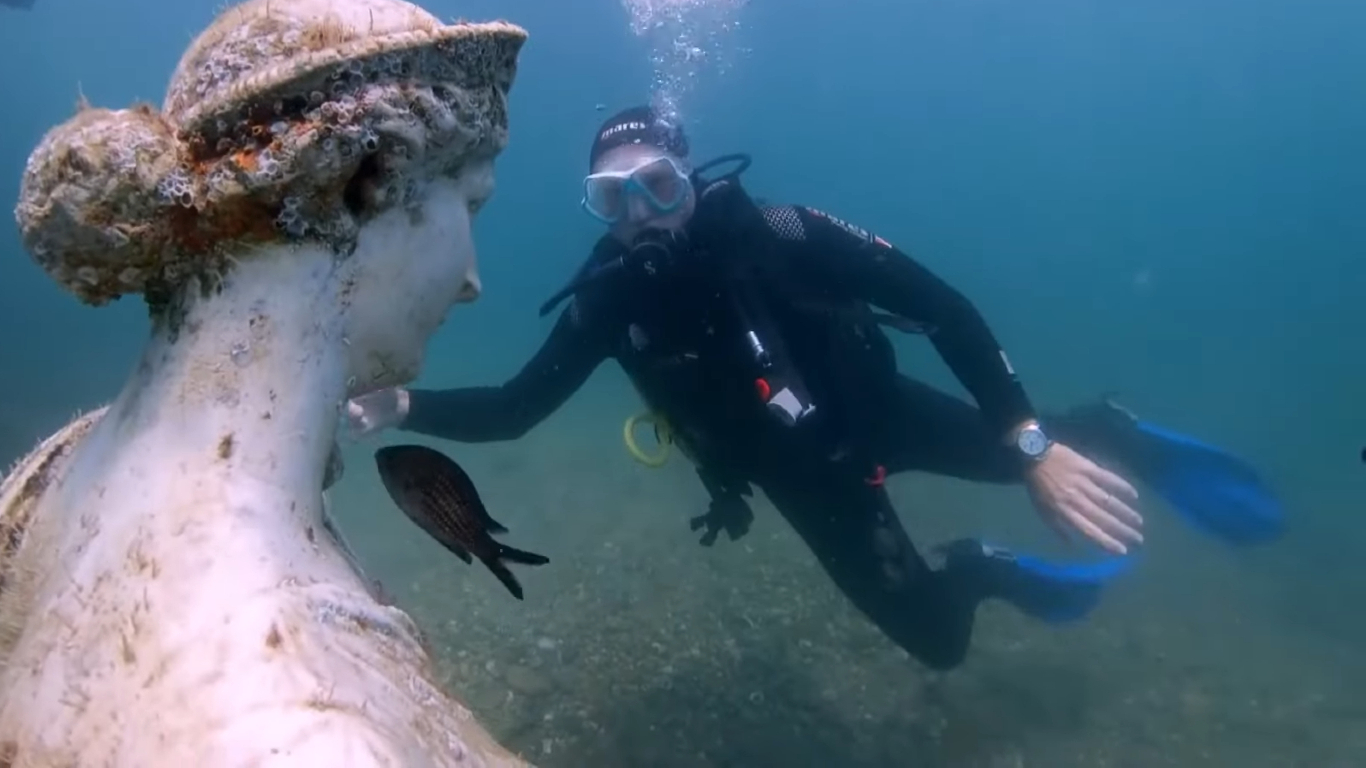Not that it will ever happen given the oasis of sin is in the middle of a desert, but imagine for a second if Las Vegas sank. I mean really plunged to the depths of the Atlantic, taking with it every little lick of hedonism that defines the entertainment capital of the US. Americans would lose their most vibrant adult playground; it’d become a tourist attraction only for divers keen on checking out the historic rusted ruins of a city once teeming with ostentatious power plays and addiction-enabling, gangster-owned casinos. All that residual cocaine would drift away in the sea. However, it wouldn’t be the first destination of debauchery to suffer such a fate – that would be the underwater city of Baiae, a Roman resort town once frequented by the likes of Julius Caeser, Emperor Nero, Augustus, and orgy king Caligula, now relegated to a watery grave that only those with the right scuba gear can explore.
Submerged 13-feet under the sea, just off the northwest shore around the Gulf of Naples, the Las Vegas of Ancient Rome is an archaeological gold mine spanning 437 acres with a plethora of ruins that include various marble columns, domed bathhouses, porticos, replica statues (the originals are in a museum), shrines, and a few ornamental fish ponds. The stories of Roman nobility letting loose are echoed by registered tour guides, who regularly take divers down to the watery grave and point out historically significant areas, like a crumbled villa and its mosaic floor, where apparently Gaius Calpurnius Pisoni spent his days conspiring against Emperor Nero.
RELATED: Dive To An Underwater Wine Cellar & Handpick Your Own Bottle In Croatia
Talking to Daily Sabah earlier this year, Marcello Bertolaso of the Camp Flegrei diving centre described Baiae as an incomparable archaeological treasure.
“It’s difficult, especially for those coming for the first time, to imagine that you can find things you would never be able to see anywhere else in the world in just a few metres of water… divers love to see very special things, but what you can see in the park of Baiae is something unique.”
The underwater city of Baiae has been designated a protected marine area since 2002, although it was first discovered in the 1940s when an Italian Airforce pilot, Raimondo Baucher, spotted the ruins while capturing a few aerial photos. Reports indicate that the city’s history could date as far back as 178 BC and operational up until the 4th Century, where it sank due to a process known as bradyseism.
RELATED: Archaeologists Uncover 5,000-Year-Old Brewery In Egypt
The reason why the city of Baiae became so popular in the first place was because of all the hot springs that popped up as a result of a neighbouring supervolcano then known as Campi Flegrei. The city met its maker eventually, with all the nearby hydrothermal and seismic activity causing the land to gradually fall and collapse into the sea, ripping away all the lavish villas built by the likes of Julius Caesar and Emperor Nero. Although some of the remnants of these mansion-like villas have been partially reduced and preserved at the land-based Museum of Baiae, while the rest remain underwater.
If you consider yourself a bit of a history buff and make it a habit to explore these unique destinations, know that visitors can dive to 14 different points of the archaeological site by hitting up Campi Flegrei Archaeological Park, spanning Portus Julius, the Submerged Nymphaeum of Emperor Claudius, Smoky Reef, and others.
The Las Vegas of Ancient Rome also lies next to the commercial capital of Pozzuoli and the military seat of Miseno, both cities that suffered the same fate and can also be found submerged in the same area. Those ruins reportedly lie between four and six metres underwater.
















